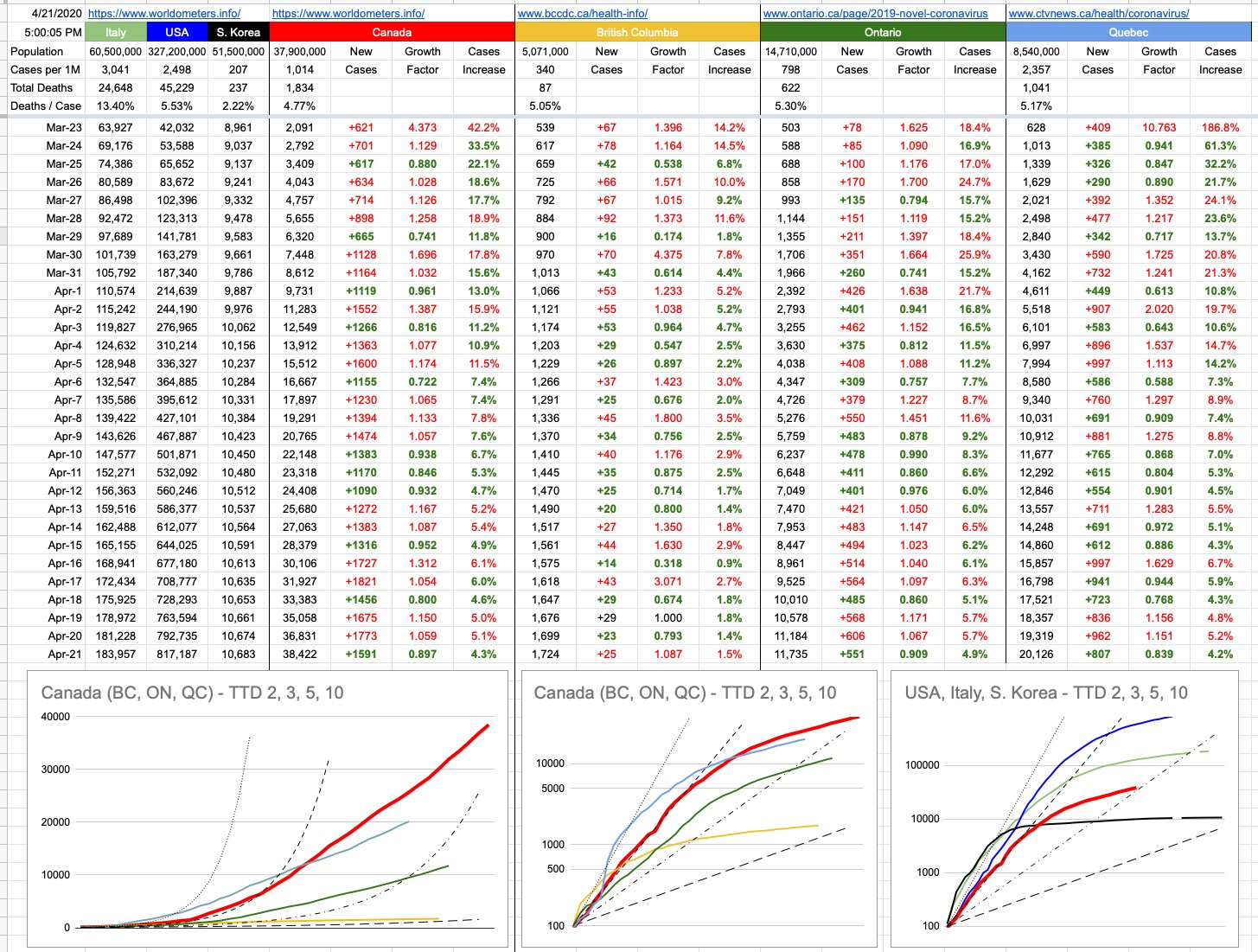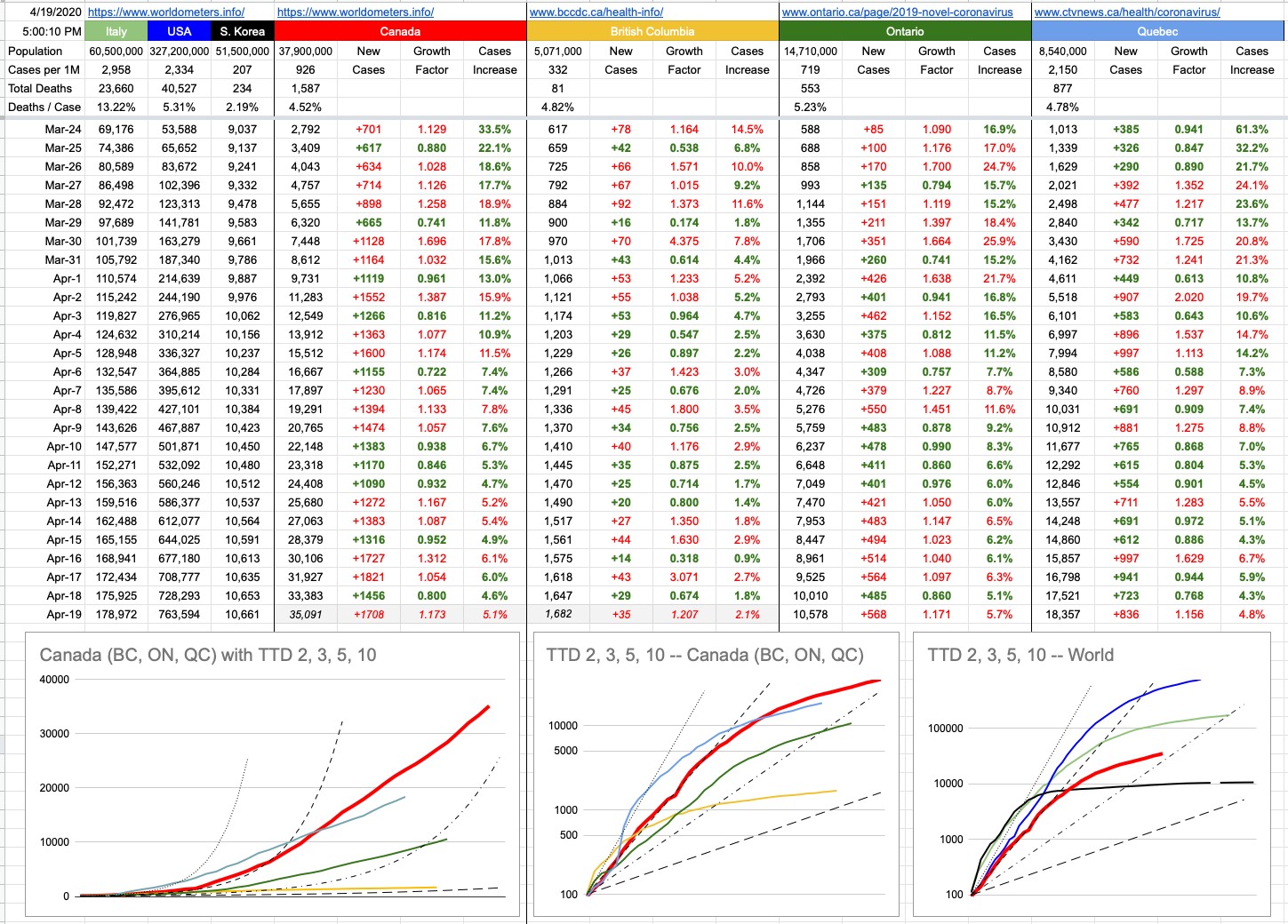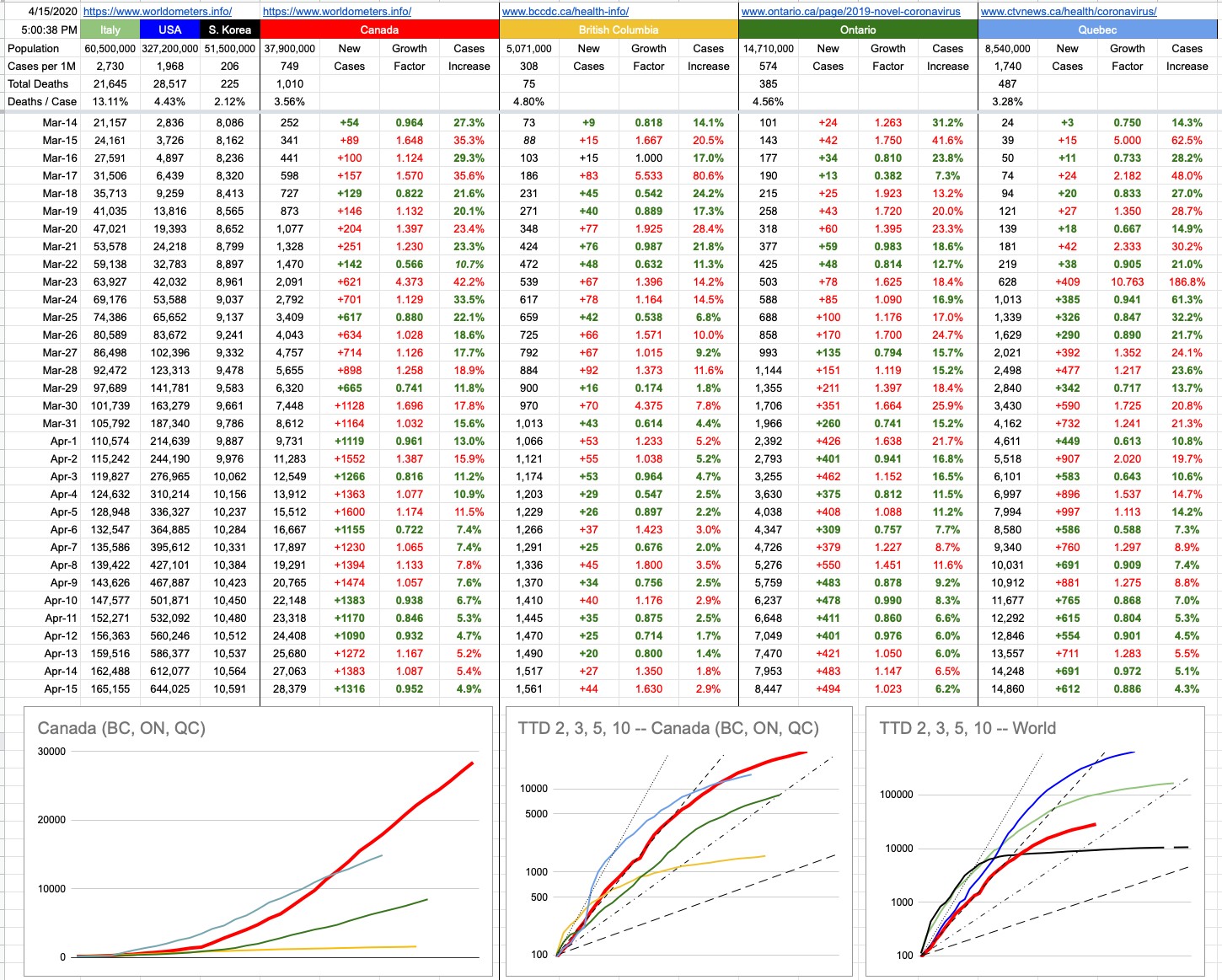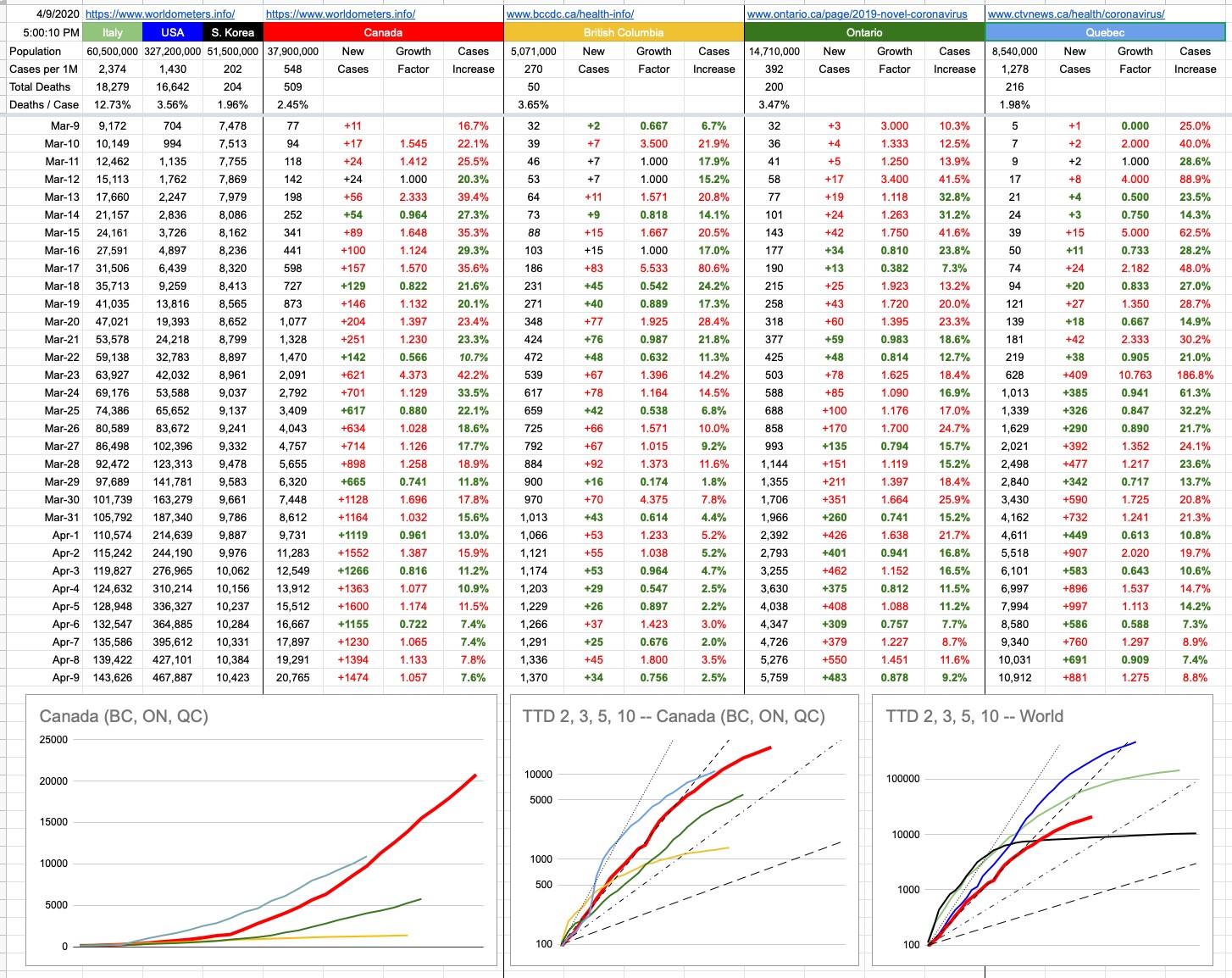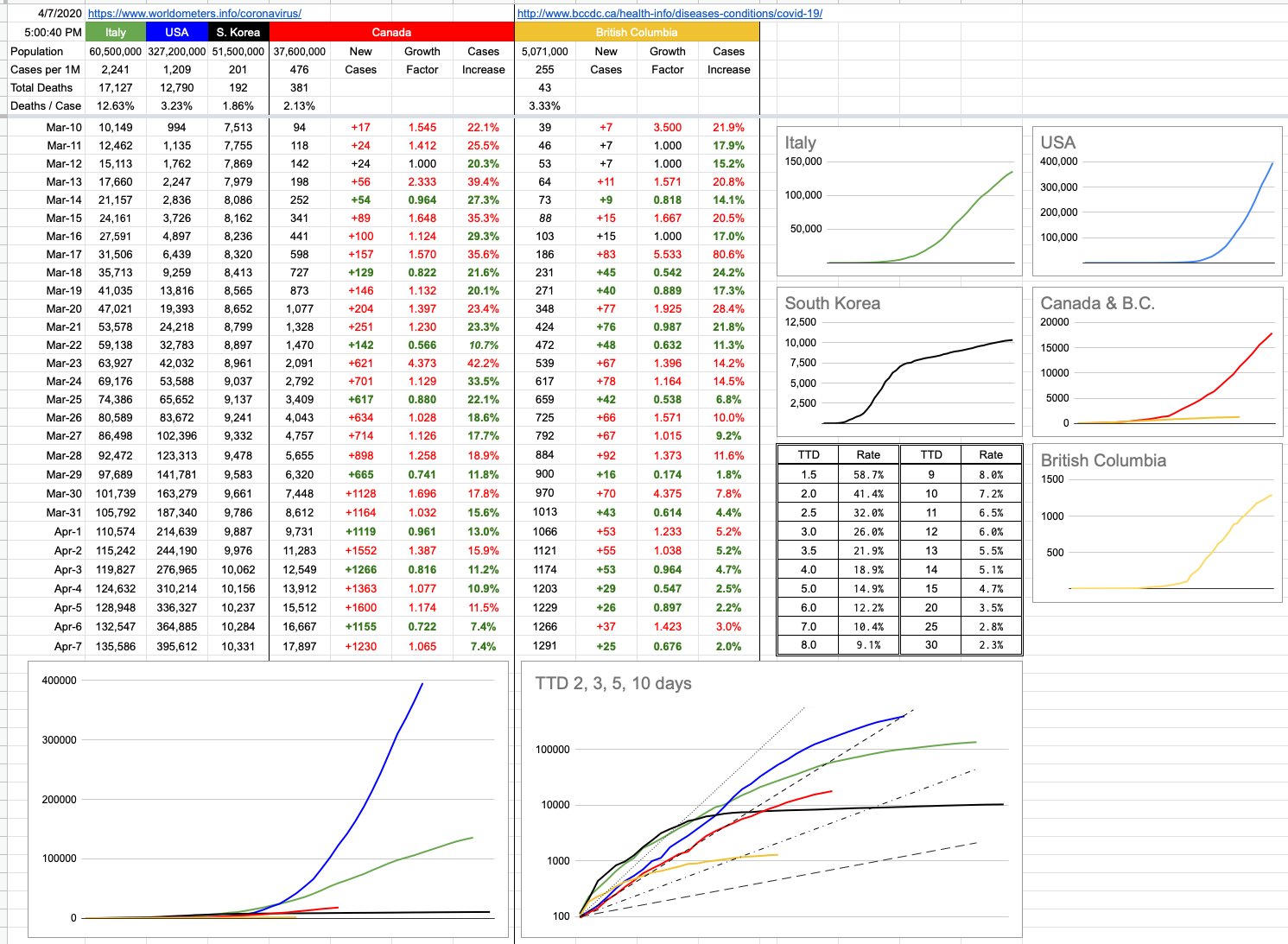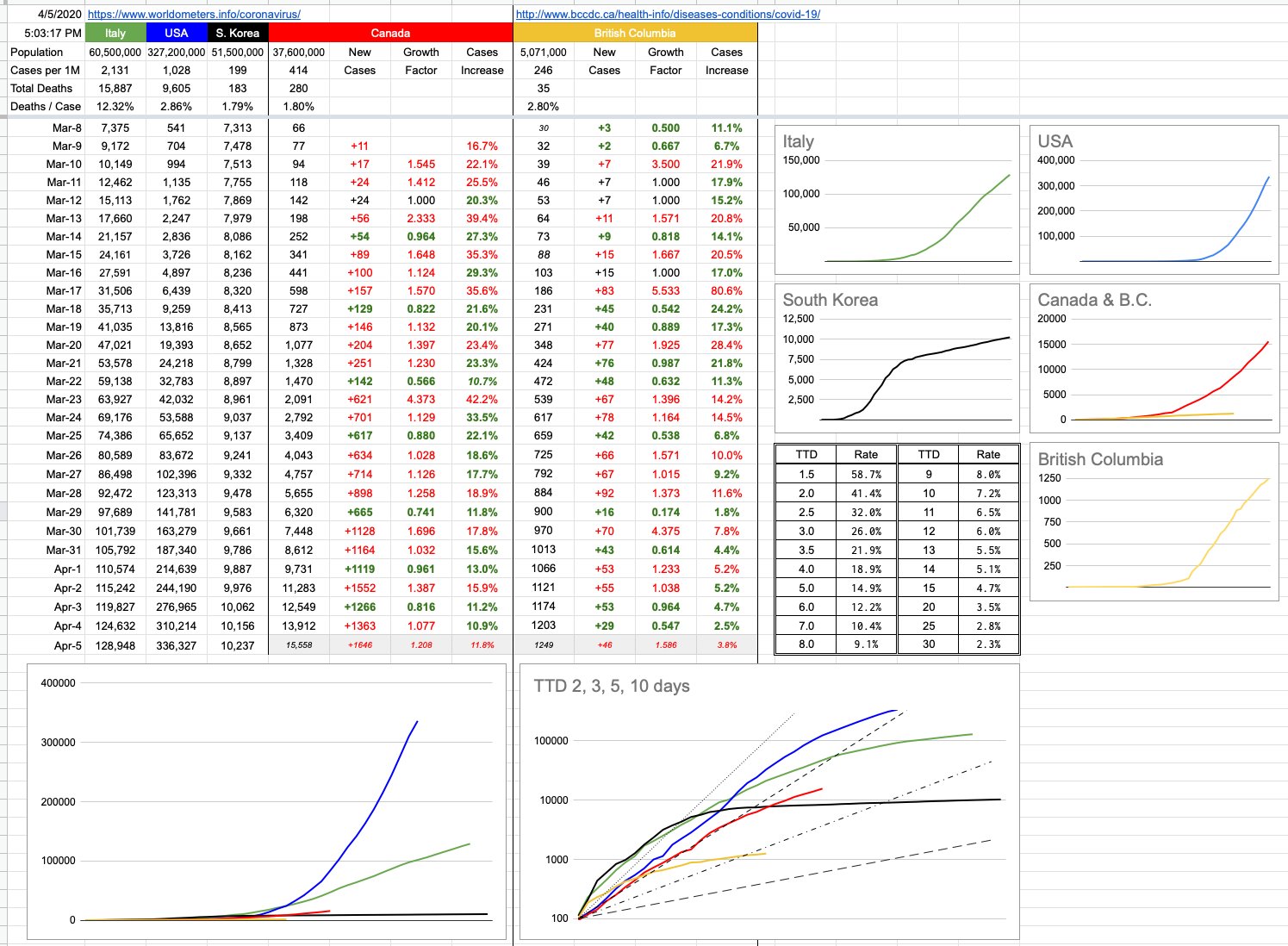Day 36 – April 21, 2020
The answer to the question…. “Where are you finding all this time to research and write?” — is every simple. All the time I spent driving, parking, walking… from meeting to meeting to lunch to meeting to meeting to whatever… well, when all of that travel can be measured in centimetres and the time it takes in seconds… here we are. These scribbles are the result of free time that never used to exist. Also, the length of many of these meetings now can quickly be trimmed… well, jeez darn it, looks like the WiFi is crapping out, gonna have to let you go, my people will call your people, yeah ok, bye.
I don’t do a lot of that… I’m too polite. That’s never really an option when it’s in person, but when you’re behind a screen and keyboard… it’s tempting. In any event, you can always check your brain out of a meeting, and that often happens when I’ve lost interest… which sometimes happens right off the bat. I listen to a lot of ideas and proposals, but certainly one way to get me to hang up my brain is to throw lots of buzzwords at me.
“Hey Horatio, thanks so much for taking the time to talk to me. I know you’re busy so I’ll get right to it. What our app intends to do is to disrupt the market, to shift the blockchain paradigm by leveraging existing synergies in the deep learning space and employing best practices to scale-up the mission-critical algorithms that’ll fuel the next generation of mobile.”
Dude, you’re a paragraph in, and you’ve already lost me.
And this is the same filter I’m using while trying to wade through the colossal amount of information with which we’re being bombarded these days. More than three buzzwords in one breath equals nonsense.
Self-serving, bias-conforming, buzzword-infested “reports” that magically wind up at the conclusion that perfectly aligns with the author’s intended audience, political beliefs, click-bait potential… whatever. If you want to believe that this virus was caused by reptilian aliens who’ve arrived on earth, and who’ve activated it with their nefarious 5G signals so as to expose Bill Gates’s agenda of GMO’ing vaccines because he’s just a pawn for big pharma who already have the vaccine because they’re in cahoots with the aforementioned aliens… yeah, I guess there’s not much I can say that’ll change your mind. That’s an extreme example of the crap that’s out there… but since it’s on a well-designed website with a very trustworthy-looking font… well, it might be true, right? Yeah… no… why don’t you just take that paradigm and shift it, if you know what I mean.
But once in a while, credible reports — from credible sources — arrive at similar conclusions, having started at very different points. And those are always interesting because they, unless they’re referencing each other, might offer some unbiased, independent… dare I say it… truth.
There’s this famous Stanford report that’s buzzing around these days… claiming that recently, while Santa Clara county had only 1,094 confirmed cases, antibody tests suggest that the number was somewhere between 48,000 and 81,000. The range of that number is wide enough that it makes one wonder about the inherent problems of the test sample. I have no idea, but that’s a pretty big error range. Nevertheless, let’s go with it and just pick the average… 48+81 = 129….. 129k ÷ 2 = 64,500…. and 64,500 ÷ 1,094 = 59x. If we apply a 59x factor here in B.C., that’s 59 x 1,724 cases… which is around 100,000… which is 2% of our population of 5,000,000.
Independently, the WHO have announced that they’ve found that 2% to 3% of the population they’ve tested has antibodies.
And independent of that, a study in the Netherlands of 7,000 blood donors found that 3% had antibodies.
Which brings up the discussion of one of the buzzwords-of-the-day: herd immunity.
Herd immunity is where enough people of a population are immune; immune enough that the infection will not spread within that group. The more infectious a disease, the higher that percentage has to be. For example, mumps is very contagious… Rø of 10 to 12, meaning every infected person will infect, on average, 10 to 12 others. Left unchecked, this would lead to 95% of the population getting infected. The other 5% inherit the benefit of the herd immunity that provides, because eventually there’s no one to catch it from. That herd-immunity threshold can only be reached via vaccination because allowing everyone to catch it is not an option. It’s a horrible disease, and these days, completely preventable.
For COVID-19, the Rø number is much lower… around 3, which implies a herd immunity percentage of around 70%. Which unfortunately, is well above the natural 2% to 3% that may be occurring.
Germany claims the “cases in the wild” number to be higher than that… a little over 10%. Better, but still far from what’s needed… which is a vaccine, which would launch that number into the high 90s and that would be the end of this pandemic.
Until that happens, the best thing to do is not catch this and/or give it to someone else.
BUT — and this is a big but, in two parts… IF you are already one of those 3% and IF having antibodies grants you immunity, then your individual life going forward does look a little different. For one thing, you can stop worrying about catching it.
There is no general agreement yet on how much immunity these antibodies confer, but some… for sure. What concentration you need in your blood, how long it lasts… all of that remains to be seen. I’m not sure who gets those antibody tests and when, but they’ll be arriving here in B.C….. soon. Sign me up.
View Original Post and All Comments on Facebook


